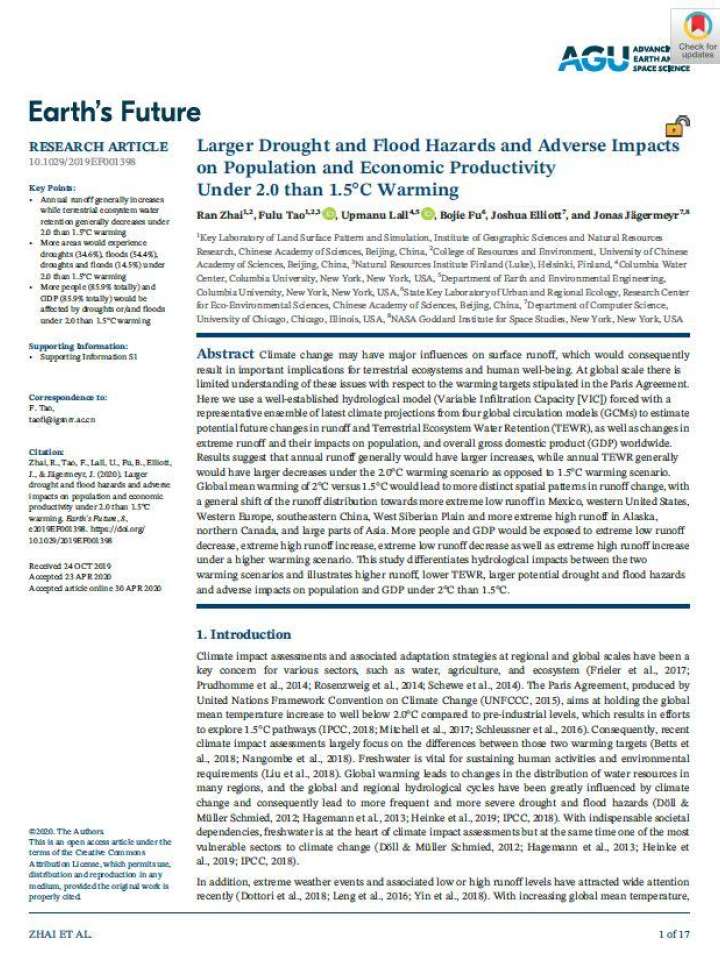Larger drought and flood hazards and adverse impacts on population and economic productivity under 2.0 than 1.5°C warming
In this study, the researchers provide a comprehensive and systematic assessment of runoff change, Terrestrial Ecosystem Water Retention (TEWR) change, extreme low and high runoff change and the adverse impacts on population and Gross Development Product (GDP) under 1.5 and 2.0°C warming scenarios through a well‐established hydrological model Variable Infiltration Capacity (VIC). Hazards and adverse impacts are projected to increase under 2.0 than 1.5°C warming scenario. Annual runoff is projected to increase more under 2.0 than 1.5°C warming scenario. Annual TEWR is projected to decrease more under 2.0 than 1.5°C warming scenario.
In addition, more potential droughts and floods are projected under 2.0 than 1.5°C warming scenario. Potential drought hazards are projected to happen in large parts of the Southern Hemisphere, Southern Europe. And potential flood hazards are projected to happen in many areas in Asia and the northern part of North America under the two warming scenarios. About 44.6% (45.1%), 56.1% (61.0%), 15.3% (20.2%) of the population is projected to be affected by droughts, floods, droughts, and floods concurrently under 1.5°C (2.0°C) warming scenario. Similarly, about 43.7% (48.3%), 57.1% (59.5%), 16.2% (21.9%) of GDP is projected to be affected by droughts, floods, droughts, and floods concurrently under 1.5°C (2.0°C) warming scenario.
Explore further
